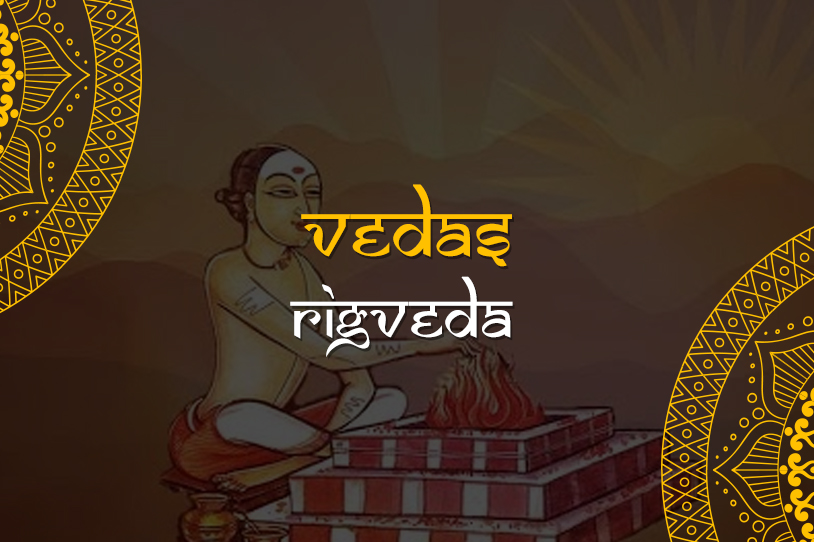Vedas – Rigveda
The oldest known Indian scriptures are the vast corpus of Sanskrit poetry termed as the
Vedas. Considered to be a divine revelation to the Ṛṣi-s (Seers) of ancient India, Vedic
Chanting is bound by strict adherence to six rules – Varṇa (pronunciation), Svara
(chanting notes), Mātrā (duration) Balam (force), Sāma (continuity) and Santāna
(conjugation, punctuation). Adhyayanam or the process of study that involves repeating
exactly as the teacher recites has preserved these rules for thousands of years.
In this course, you will learn the very essentials of Veda recitation to get you started.
This course is a recommended prerequisite to all our courses.The Vedas are intended
to serve a different purpose. They have to be learnt by heart, understanding the correct
way of pronouncing the mantras by listening to the rendering of the mantras by the guru
(teacher). The Veda mantras so learnt should become the guide in our daily life, in our
Karmaanushtaana, Tapas, Isvara aaradhana, etc. If, in India, the Vedas retain their
original vitality even today, it is because these hyms are being continuously repeated by
students and teachers of the Vedas, and the purity of the sounds and accents of the
words are retained in that process. It is only by practising the Vedic injunctions that we
can obtain the grace of God, both for our individual welfare and for the welfare of the
whole world. That is why the mere preservation of the Vedas in well-bound volumes
cannot secure us the benefits for which they are intended.
Veda adhyayana, without knowing the meaning thereof, is like preserving the body
without the soul.
Veda Mantras uttered with a knowledge of their meaning will lead to
Papa-parihara(expiation of sins), and Arishta Saanti(liquidation of evil), and pave the
way to Brahma-sakshatkara(God realisation).
The Vedas are the roots of our religion. All other Paraphernalia, like feast and festivals,
are like the leaves and fruits of that tree, depending on their sustenance on the Vedic
roots. Though imbedded in mud, the internal core of the roots is as fresh and fragrant as
the fruits and flowers on the top. It is no use feeling gratified that the Vedas have been
written down, printed and published by Western Scholars. To us, Veda adhyayana and
their employment in the sacraments of our daily life are important. For that purpose it is
necessary to learn them by heart, understand their meaning, and recite them in the
prescribed manner.
Basic course (14 month)
1. Ganesha Atharvashirsha
2. Purusha Sukta
3. Durga Sukta
4. Narayana Sukta
5. Sri Sukta
6. Medha Sukta
7. Vishnu Sukta
8. Bhagya sukta
9. Laghu Nyasa
10. RUDRA (namaka)
11. Chamaka
12. Mantra pushpam
13. Nitya pooja vidhi
14. Dasha shanti
Advance Course (3 years)
1. Shiksha Valli
2. Bramha Valli
3. Bragu Valli
4. Mahanarayanopanishad
5. Aruna prashna
6. Mahanyasa vidhi
7. Udaka shanti
8. Rakshoghna vidh
Advanced course 6 years
Introduction to Vedas
Vaidic Rishi, Rrushika, Devata
Vaidic Chhand and Chhand Anushasan
Introduction to Rigveda
Rugved – Samhita, Brahmanas, Aranyakas, Upanishadas
Introduction to Atharvaved
Atharvaved – Samhita, Brahmanas, Upanishadas
Introduction to Shukla and Krishna Yajurveda
Yajurved – Samhita, Brahmanas, Aranyakas, Upanishadas
Introduction to Samved
Samved – Samhita, Brahmanas, Aranyakas, Upanishadas
Upavedas – Ayurveda, Gandharvaveda, Dhanurveda, Sthāpatyaveda
Vedang – Shiksha, Nirukt, Vyakaran, Kalp, Chhand, Jyotish
Ved – Ideals of Human life


